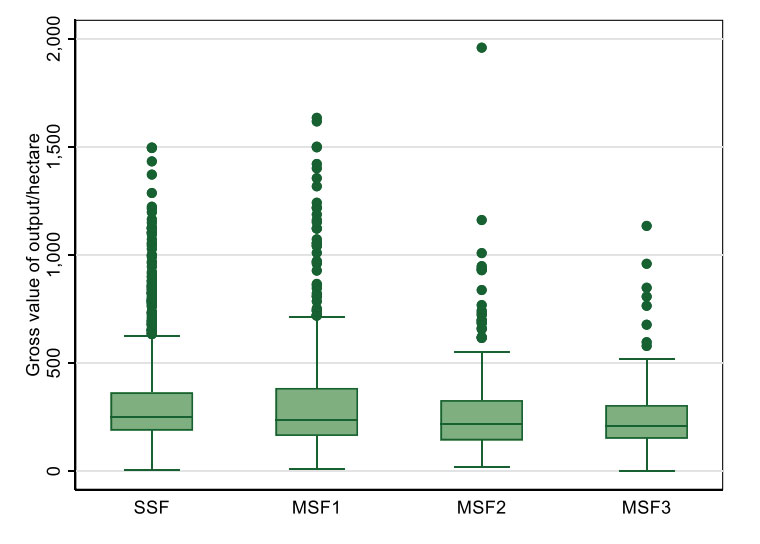How important is farm size to agricultural productivity in Sub-Saharan Africa?

Written by: Oluwatoba Omotilewa
The finding that smallholder farms are more productive than medium- to large-scale farms has long been documented, and has led to smallholder-led agricultural and development strategies in sub-Saharan Africa (SSA). However, evidence for this assertion has been largely limited to data from farms operating 5ha and below. More recent evidence from Nigeria suggests that productivity varies widely within farms, regardless of farm size. This blog examines our recent study, utilizing data over a wider range of farm sizes over two years in Nigeria to further investigate how productivity relates to farm size.
The main questions asked included, ‘Does farm size play any role in agricultural productivity?’ And if so, ‘How important is this role?’ Also, ‘How does farm productivity or cultivated area vary over time?’ In developing countries in general, and SSA in particular, these are relevant questions that development practitioners, agricultural stakeholders, policymakers, and researchers must continue to ask as they re-think strategies that best improve agricultural productivity and food security in Africa.
What did we find?
Our study investigated how changes in farm size distributions relate to farm productivity and equity in African agriculture, using farms ranging from 0-40ha in Nigeria. We found that farm size plays no role in farm productivity between the 0-40ha range of farms. In fact, the findings show that although average productivity is nearly constant across all farm size categories (whether small-scale or medium-scale farms), there is a significant variation in productivity within each farm size category (see Figure 1).
Furthermore, the study found dynamic movements across farm size categories over time (from 2018 to 2020), where some small-scale farm operators stepped up into cultivating medium-scale farms while some medium-scale operators stepped down into cultivating smaller farm sizes. However, the majority of these transitions from one farm size category to another were movements into the immediate level just below or above the farm size categories the operators were originally cultivating.
Lastly, our study documents that, on average, productivity remained consistent for operators who were consistently smallholders or medium-scale farmers over time (from 2018 to 2020). However, for operators who switched from small-scale to medium-scale operations between 2018 and 2020, there was a relative increase in productivity over time; whereas, for operators switching from medium- to small-scale farming, their productivity appeared to decrease over time.
Figure 1: Box plot showing gross value of crop output/ha by farm categories.

Note: SSF implies small-scale farms (<=5ha), MSF1 implies medium-scale farm (5-10ha), MSF2 implies 10-20ha, and MSF3 implies >20ha.
Policy implications
Overall, the findings show that farm size is a relatively weak indicator of productivity in Nigeria. That is, any apparent relationship observed between farm size and productivity in small- or medium-scale farm samples are insignificant and non-size related factors are much more important drivers of productivity. In fact, given the variability in productivity within each farm size category, there is great potential to raise productivity across farms of all sizes in Nigeria. And if all farms with below average productivity could meet this level, this could raise average gross output per hectare by 125 per cent.
These results have important policy implications. First, development practitioners and researchers must recognize that both smallholders and medium-scale operators exhibit a high degree of variability in potential productivity. Hence, focusing on farm size, a relatively minor factor influencing national agricultural productivity, risks diverting attention away from more impactful programs and policy options to raise productivity. The fact that there is high variation in productivity across all farm size categories suggests that public spending which emphasizes new technologies and practices that can be adopted by farms of all sizes – such as productivity raising seed varieties, improved agronomic and soil health practices raising yield response to inputs, and practices that stabilize crop yields in the face of variable weather – hold the greatest potential for raising farm productivity for all farms.
Photo credit: © IFAD/Bernard Kalu
